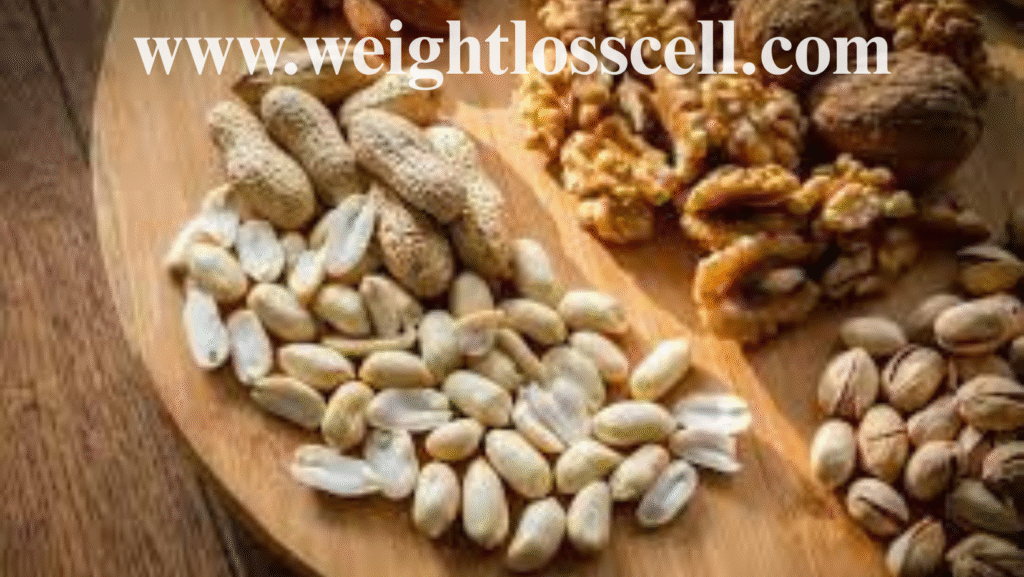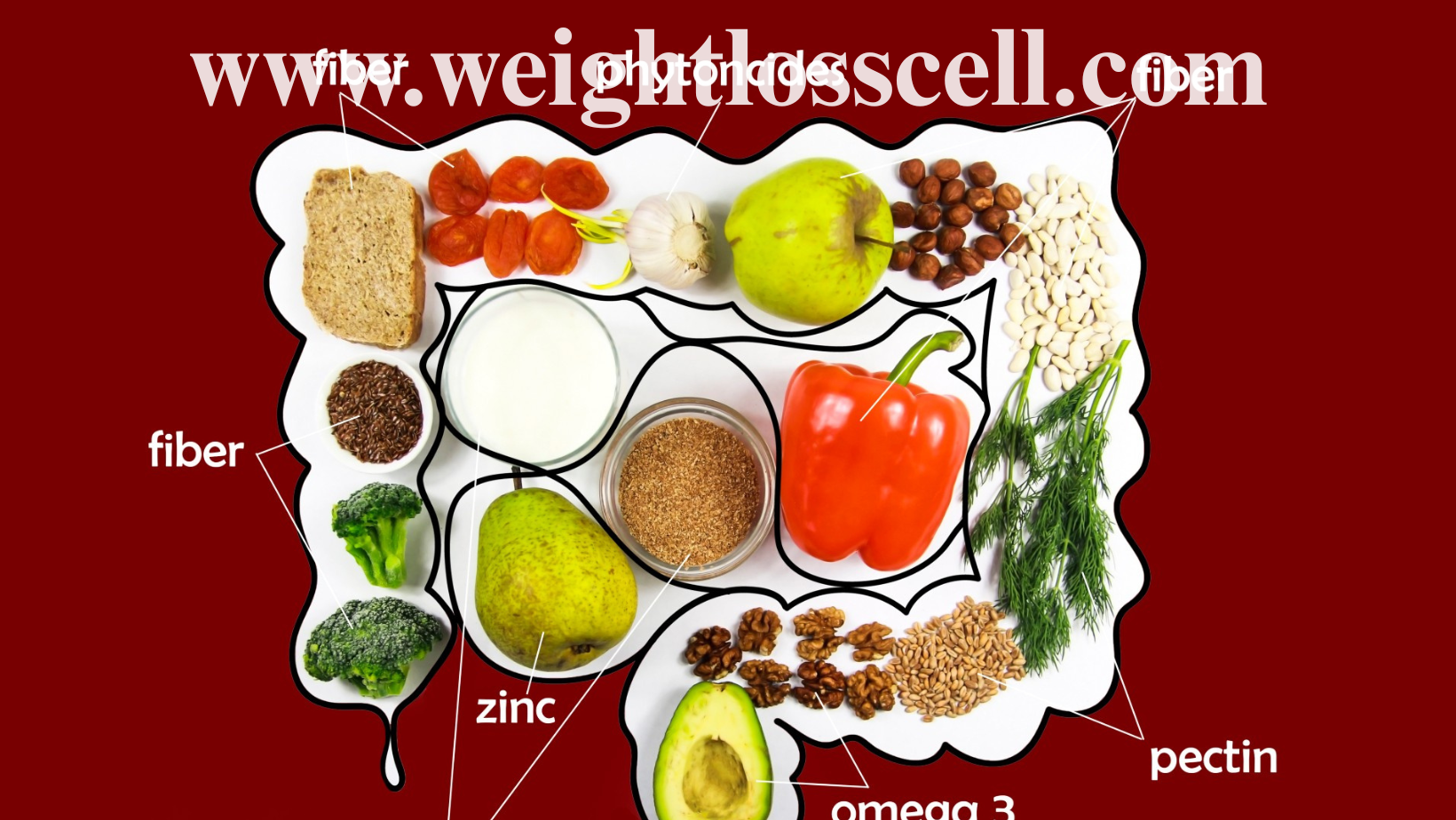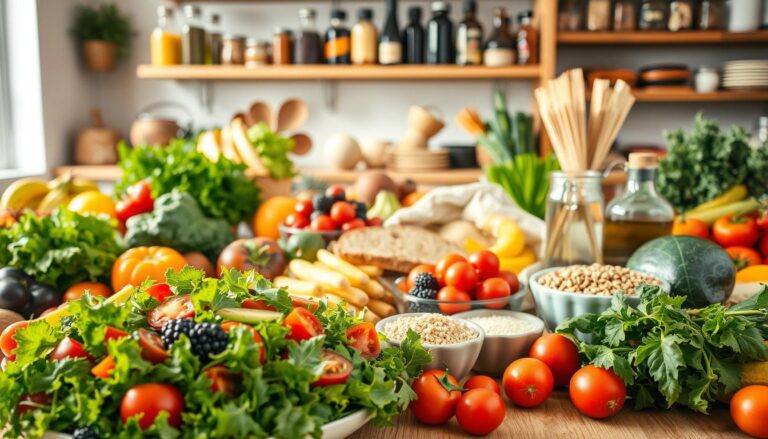Gut Healthy and Sustainable Eating Guide:
How Small Daily Swaps Can Boost Gut Health and Overall Well-Being
Making small, consistent changes to your diet can significantly reshape the trillions of microbes in your gut, benefiting long-term health and well-being. This guide provides a practical roadmap to help you improve gut health with simple swaps in your daily routine.
Key Takeaways
- Incorporating more plants and fewer ultra-processed foods helps build a resilient gut.
- Fiber, fermentation, and polyphenols nourish beneficial bacteria.
- A variety of plants every week supports a diverse and healthy microbiome.
- Gradual, consistent changes to your diet yield lasting health benefits.
The Connection Between Diet and Gut Health
Your gut microbiota—the community of microorganisms in your digestive system—plays a key role in your health. The food you eat directly impacts the balance of these microbes, influencing inflammation, digestion, energy levels, and long-term wellness.
A diet rich in fiber, unsaturated fats, and polyphenols, like the Mediterranean diet, has been shown to reduce cardiometabolic risks. Conversely, a typical Western diet high in refined carbs and saturated fats can disrupt gut microbiota and increase the risk of obesity and metabolic diseases.
How to Support a Healthy Gut with Smart Food Choices

- Opt for Whole, Minimally Processed Foods: Choose seasonal, plant-forward foods that naturally increase fiber and polyphenols. These nutrients improve gut health by supporting beneficial bacteria, reducing inflammation, and modulating the immune system.
- Limit Ultra-Processed Foods: Ultra-processed items often contain additives and refined sugars that harm gut health. Reducing the consumption of processed foods can help restore microbial balance and lower systemic inflammation.
- Include More Legumes and Local Produce: These foods are not only beneficial for the gut but also help reduce the planet’s environmental footprint.
Microbiome Basics: Why Diversity Matters
The gut microbiome thrives on diversity. A varied microbiota helps maintain resilience against stressors like antibiotics and poor dietary choices. Key beneficial bacteria include Bifidobacteria, Lactobacillus, and Faecalibacterium prausnitzii, which support immune health and digestive function.
Eating a wide range of plant-based foods helps promote this diversity, encouraging the growth of beneficial bacteria and the production of short-chain fatty acids (SCFAs), which nourish the gut lining and reduce inflammation.
Sustainable Eating Habits for a Balanced Gut
- Fiber is Key: Fill your plate with legumes, whole grains, vegetables, fruits, nuts, and seeds. These foods provide the fermentable fiber necessary for gut bacteria to thrive.
- Polyphenol-Rich Foods: Foods like berries, tea, coffee, and extra virgin olive oil nourish microbiota and support anti-inflammatory processes.
- Healthy Fat Swaps: Choose extra-virgin olive oil and omega-3-rich foods like fatty fish to support metabolic health and reduce inflammation.
- Plate Building: Aim for a balanced plate—half vegetables, a quarter whole grains, and a quarter legumes or lean proteins. This ensures a nutritious, gut-friendly meal with ample fiber.
- Aim for 30 Different Plant Foods Per Week: Aiming for diversity in plant-based foods helps feed a wide range of beneficial bacteria, increasing SCFA production and supporting gut health.
How to Increase Fiber Without Bloating
- Gradually Increase Fiber: Start by adding 5 grams of fiber every few days to prevent bloating.
- Hydrate: Drink plenty of water to help fiber move through your digestive system smoothly.
- Use Cooking Methods That Improve Digestibility: Soaking beans or using longer cooking times for legumes can reduce digestive discomfort.
Mediterranean Diet for a Balanced Gut
The Mediterranean diet is plant-based and rich in polyphenols, healthy fats, and seafood, all of which support a healthy microbiome. This diet has been linked to lower rates of metabolic syndrome and cardiovascular diseases.
- Swap butter for olive oil.
- Choose beans and whole grains over refined grains.
- Eat seafood twice a week instead of processed meats.
Whole Grains and Legumes: Gut-Friendly Staples
Whole grains like oats, rye, quinoa, and bulgur provide fiber that supports microbiome diversity. Similarly, legumes such as chickpeas, lentils, and black beans offer prebiotic fibers that help beneficial bacteria thrive.
- Batch-Cook Grains and Legumes: Prepare large portions and freeze them for convenience. This saves time and makes it easier to incorporate gut-healthy foods into your daily routine.
Fermented Foods and Prebiotics
Fermented foods introduce beneficial bacteria into your gut. Yogurt, kefir, kimchi, and sauerkraut are all good sources. Pairing them with prebiotic fibers (found in garlic, onions, and oats) helps support gut health.
- Start with Small Portions: Gradually increase the amount of fermented foods and prebiotics in your diet to allow your gut to adapt and avoid bloating.
Reducing Ultra-Processed Foods
Many Western diets are high in ultra-processed foods that contain refined sugars, unhealthy fats, and additives that can harm your gut microbiota. Instead, focus on whole foods that nourish your microbiome and help reduce inflammation.
- Avoid Sugary Drinks: Replace sodas with water or unsweetened tea.
- Choose Whole Fruits Over Refined Snacks: Whole fruits are packed with fiber and nutrients that benefit your gut.
Supporting Gut Health Through Lifestyle Choices
- Sleep: Getting 7–9 hours of quality sleep helps maintain microbiome diversity and metabolic balance. Establish a regular sleep schedule and wind down before bed.
- Exercise: Regular physical activity, even a daily walk, promotes a more diverse and resilient microbiome.
- Stress Management: Chronic stress disrupts gut health. Incorporate mindful breathing, yoga, or outdoor breaks into your routine to lower stress levels.
- Meal Timing: Align your meals with daylight and limit late-night eating to support the gut lining and metabolic processes. Consider time-restricted eating if it fits your lifestyle.
A Sample U.S. Day for Gut Health
- Breakfast: Kefir overnight oats with chia, blueberries, and walnuts.
- Lunch: Quinoa-lentil bowl with arugula, roasted peppers, and a lemon-olive oil dressing.
- Snack: Apple with almond butter or Greek yogurt with pumpkin seeds.
- Dinner: Grilled salmon or tempeh with farro, sautéed greens, and a mixed-herb salad.
You may like to read: Creatine Exploring the Pros and Cons
Conclusion
Small, consistent changes to your diet can significantly improve gut health and overall well-being. By focusing on fiber, plant diversity, and whole foods, you can enhance your microbiome and reduce the risk of chronic diseases. Pair dietary changes with healthy lifestyle habits like quality sleep, exercise, and stress management to achieve long-term health benefits. Start with one small swap and gradually build healthier habits that work for you.
FAQs: Gut Healthy and Sustainable Eating Guide

Still not satisfied? Here are some frequently asked questions:
What is the link between sustainable food choices and a balanced gut microbiome?
What is the healthiest diet for gut health?
How many different plant foods should I aim for each week to improve my microbiota?
Which whole grains and legumes most reliably support gut health?
How does eating healthy improve gut health?
Do fermented foods and probiotic supplements actually change the gut microbiome?
What common diet patterns harm gut health?
How do polyphenols and healthy fats support the microbiome?
Can lifestyle factors like sleep, exercise, and meal timing influence gut bacteria?
How should people with inflammatory bowel disease or insulin resistance approach dietary changes?
What is the healthiest diet for your gut?
For a healthy bowel, you need fibre from a variety of sources, such as:
- wholemeal bread
- brown rice
- fruit and veg
- beans
- oats
Are there simple swaps to reduce processed foods and boost gut-friendly nutrients?
What are the 5 R’s of gut health?
How can I increase fiber without causing excessive bloating?






